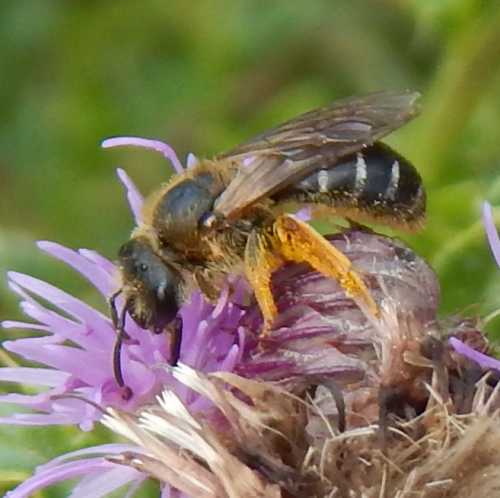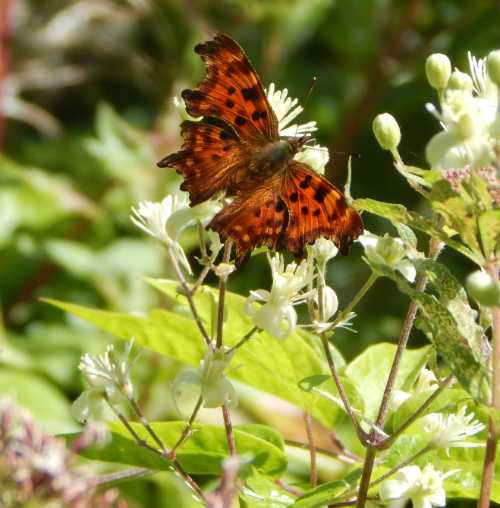Why Are bees Good Pollinators?
Here Are 6 Key Reasons
What is it about bees that makes them so perfect for the job of pollinating flowers? The answer lies in a set of physical features and biological drives, including:
- their hairy legs and bodies easily collect pollen and transfer it between flowers, thus enabling pollination to occur;
- bee species vary in shape, size, and floral preference, meaning there's a bee suitable for most flower pollination tasks;
- some bees have specialist skills, such as buzz pollination;
- bees are reliable pollinators, because they depend on flowers for their own survival;
- different bee species emerge at different times of the year to suit varying flowering periods;
- they provide their pollination services for free!
Why bees are perfect pollinators
Let's look at the points above in greater detail.
1. They have furry bodies and legs
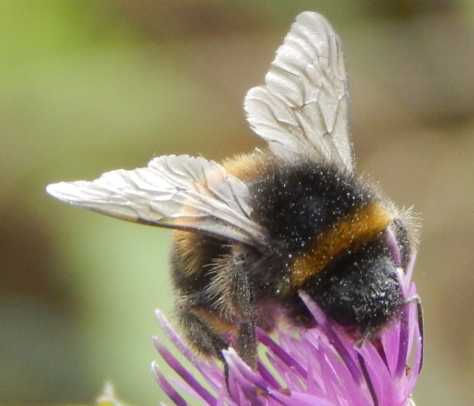 Pollen sticks to the hairs of the furry body of the bee.
Pollen sticks to the hairs of the furry body of the bee.Hairs enable transfer of pollen between flowers. As the bee's body and legs brush against pollen attached to the anthers of the flower, some of the pollen sticks to the bee's hair.
The bee then visits other flowers, simultaneously transferring that pollen. Read about The Plant Pollination Process.
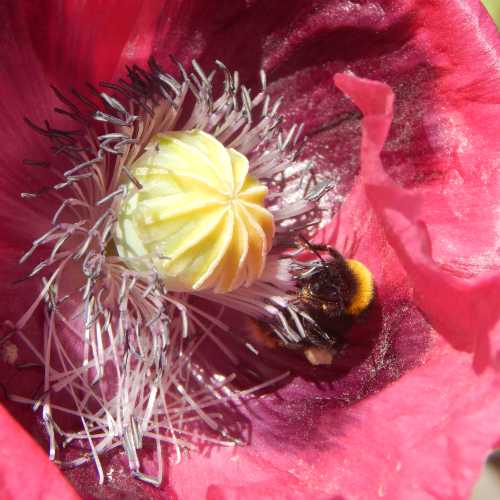 A bumble bee inside a poppy flower. Each of the many white filaments around the center of the flower, are laden with pollen.
A bumble bee inside a poppy flower. Each of the many white filaments around the center of the flower, are laden with pollen.2. Size, shape and floral preference
Flowers are different shapes and sizes and some require insect pollinators of different shapes, sizes and even skills, in order to achieve successful pollination.
Fortunately, there are thousands of species of bee, with different floral preferences, and ideally adapted to enter into, and pollinate the many millions of different flower shapes, including for example, very tiny bees that enter the smallest, delicate flowers.
3. Buzz pollination
As stated above, if they are to be pollinated effectively, some flowers require bees to have 'special skills' such as 'buzz pollination'.
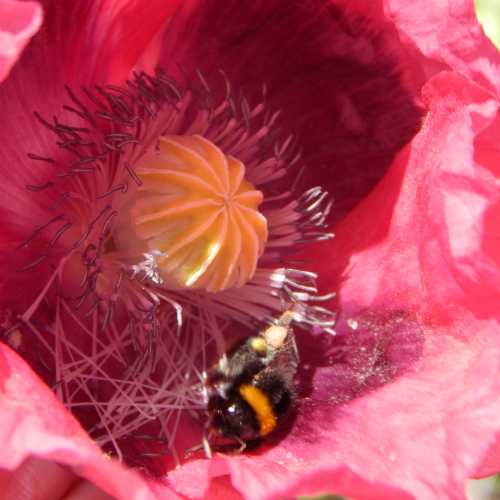 Bumble bee shaking pollen from the anthers of a poppy.
Bumble bee shaking pollen from the anthers of a poppy.This is necessary when pollen is stuck firm to the anthers of the flower.
In such scenarios, a bee may grab the anthers, then move their flight muscles very rapidly to shake the pollen loose.
Read about Which Bees Can Buzz Pollinate?
4. Bees Are Reliable Pollinators
Bees need to visit flowers to gather pollen and nectar - or flower oils for their own survival.
This ensures that where a bees is suited to pollinating a flower, they make reliable pollinators of that plant species.
5. There are different bees for different times of the year
Plants, trees and shrubs flower at different times, but that's okay, because some bee species emerge earlier or later than other species.
This means that there are bees available for a large part of the year, depending on the weather.
For example, in the UK, white-tailed bumble bees (Bombus lucorum) can emerge very early in spring, where as common carder bees emerge later, and can be available to pollinate autumn crops.
The honey bee below is foraging on winter heather.
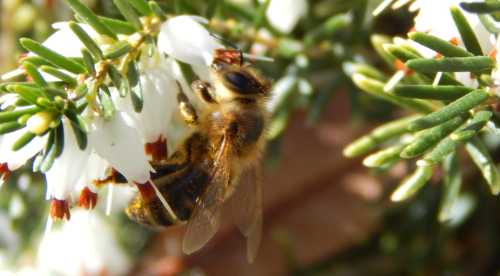 Honey bee foraging on winter heather.
Honey bee foraging on winter heather.
6. Bees pollinate for free!
In parts of China, apples and pears are pollinated by humans. This activity involves the farmer and his whole family, including children. Beekeepers are reluctant to rent out their hives to farmers because of pesticide poisoning.
In China, as I write, wages are low in comparison with Western countries, but just imagine if it was necessary to pay people in the USA, UK, Canada, Australia and so on, to do the job that bees had been doing for free, all along!
It's not only food crops we would need to be concerned about, but the wider eco-system - trees, shrubs, wildflowers, hedgerows that support huge amounts of wildlife. This is why we need to care about bees. Here are 10 things you can do to help.
If you found this page helpful or interesting, I'd really be grateful if you would share it with others - if not this page, perhaps another, such as Gardening For Bees.
Thank you so much :) .
